Cardamom
Thrips
Symptoms of damage
Identification of pest
Eggs kidney shaped lays singly in the tender part of the leaf sheath, racemes
Adult: is minute, dark greyish brown with fringed wings.
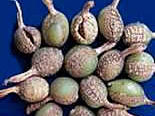

Management
Shoot, panicle and capsule borer
Symptoms of damage
Identification of pest
Egg: is pink, oval, flat and lays singly or in group on the tender part of the plant
Larva: is long, pale greenish with a pinkish was dorsally, head and pro-thoracic shield brown in colour and body covered with minute hairs arising on wards.
Pupa: Pupation takes place in lose silken cocoon in larval tunnel.
Adult: is a medium sized moth; the wings are pale yellowish with black spots on the wings.

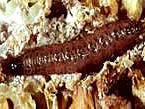

Management
Beetle Borer
Symptoms of damage
Identification of pest
Adult: small, dark brown, cylindrical beetle with short thick erect hairs covered all over body.
The elytra are hard and shiny.
Management
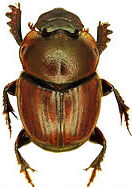
Hairy caterpillars
Symptoms of damage
Identification of pest
E. cardamomi
Eggs: Dome shaped and lay on undersurface of the leaves of shade trees.
Larva: Robust, bluish black with pale brown head, white hairs and dorsal conical tuff of hairs.
Pupa: Pupation takes place in soil
Adult: Large moth, pale yellow with wavy lines and a series of spots near the outer margin of wings
E. canaraica
Eggs: Pale yellowish in colour and lays on the undersurface of the leaves of shade trees.
Larva: Robust with red head and black ‘V’ shaped vertex border.
Pupa: Pupation takes place in soil
Adult: Large moth brownish yellow with two diagonal bunds and zig zag lines on wings.
E. fabia
Larva: Robust, dark purplish brown with black head, grey tipped long hairs and red prologs.
Pupa: Pupation takes place on dried leaves
Adult: Large bright yellow moth with prominent black wavy lines and patches on wings.
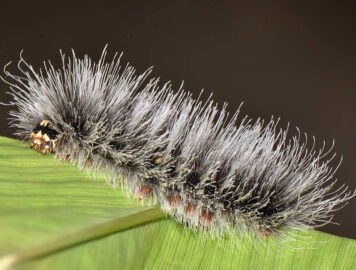
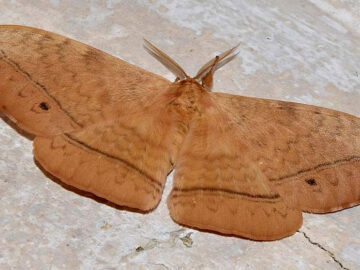
Management
Shoot fly
Symptoms of damage
Identification of pest
Eggs: cigar shaped and white colour and is laid in between leaf sheath and pseudostem on the whorl.
Adult: Fly
Management
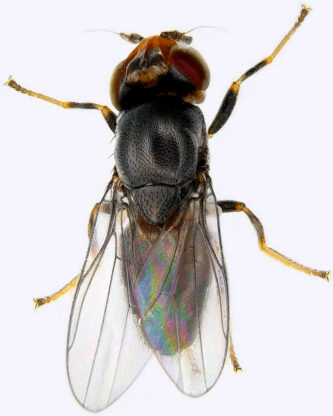
White flies
Symptoms of damage
Identification of pest
Nymphs: are pale greenish to greenish yellow in colour.Adult: with two pairs of white wings.
Adult: with two pairs of white wings.
Management
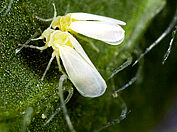
Cardamom aphid
Symptoms of damage
Identification of pest
Wingless aphid is dark brown, pyriform.
Winged aphids have wings having prominent black veins
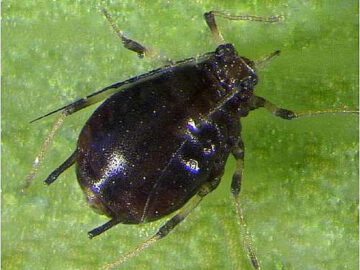
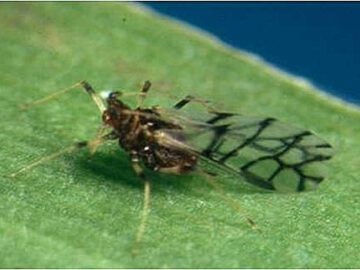
Management
Root grubs
Symptoms of damage
Identification of pest
Grubs: Short, stout, 'C' shaped, pale white in colour.
Adult: Beetles are shiny, metallic blue, bluish green, greenish brown or brown.
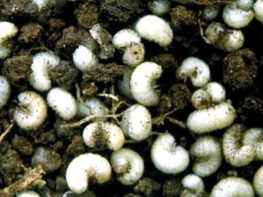
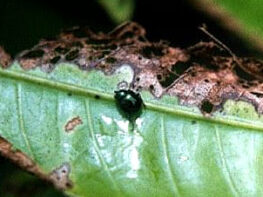
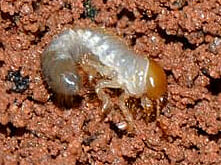
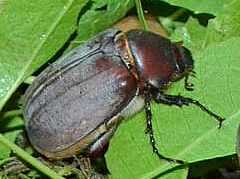
Management
